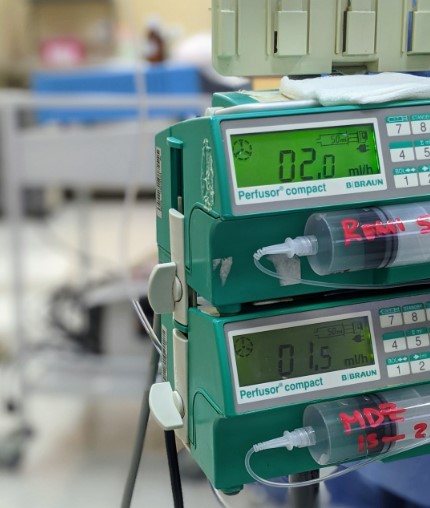You’re in the business of caring for patients, not machines. But if you’re offering high-quality patient care, you’ve got to have suitable devices.
Anesthesia machines are medical devices that enable medical professionals to mix up liquid anesthesia and give it to patients before they undergo sterilized surgery. The more efficient the machine is, the better patient care will be.
But how do you know which one’s better to use? We got you!
Keep reading to learn more about anesthesia machines and the different types available.
How Does Anesthesia Machine Work?
An anesthesia machine is a pneumatic machine that mixes oxygen, gas, and anesthetic drugs and gives them to the patient. This keeps the person from being awake during surgery, but they can still breathe.
While the patient is getting oxygen, the medical equipment keeps them from breathing in the carbon dioxide they just breathed out, which could kill them.
You can click here to learn more about anesthesia machines and how they work.
Three Types of Anesthesia Machines
An anesthesia machine is a machine that gives out a precise but variable mix of gases, including gases that make you sleepy and gases that keep you alive.
Here are the three kinds of anesthesia machines and what they do below:
1. Anesthesia Machine (DC)
The direct-current anesthetic machine has high-pressure oxygen, a pressure reducer, a flow meter, and an evaporator for the liquid used to give the anesthesia.
There is no way to change the amount of anesthetic gas; the machine only gives out oxygen. To cause anesthesia, you must add more parts to the output and connect them in series.
2. Closed Anesthesia Machines
The machine has a low-flow mixture of anesthetics and a one-way outgassing flap (door). A flap opens when a person breathes out, letting air into the CO2 absorber.
The closed anesthesia machine parts have an oxygen supply, a device for making nitrous oxide, a gas flow meter, an evaporator, a CO2 absorber, a one-way valve, a breathing tube, an outgassing valve, and a storage airbag.
Sensors that measure ventilator airway pressure, expiratory flow, end-tidal CO2 concentration, inhalation anesthetic concentration, oxygen concentration, hypoxia alert, and an automated hypoxic-nitrous oxide protective system are all part of modern anesthesia equipment.
3. Anesthesia by Air Machine
Medical air is used in several different procedures. People sensitive to oxygen use air treatments to limit how much they are exposed to it. Many patients have sensitive lungs and breathing systems, so they need pure, concentrated medical air.
Adults with breathing problems and babies born too early need good air. When oxygen needs to be diluted during anesthesia, medical air is sometimes used instead of nitrous oxide.
In some places, medical air comes from compressed air cylinders through a manifold. Most of the time, the air is compressed and sent through a compressor system.
Modern Equipment for Giving Anesthesia
Anesthesia machines are always getting better so that they can meet the needs of both patients and doctors. Many different kinds of devices give anesthesia, each with pros and cons. The best machine for a particular patient will depend on many things, like the type of surgery and the patient’s medical needs.
Be sure to do your research before purchasing a machine. That way, you can provide the best health care for your patients.
Check out the rest of our Tech Blog if you want to learn more about machines that give anesthesia.

